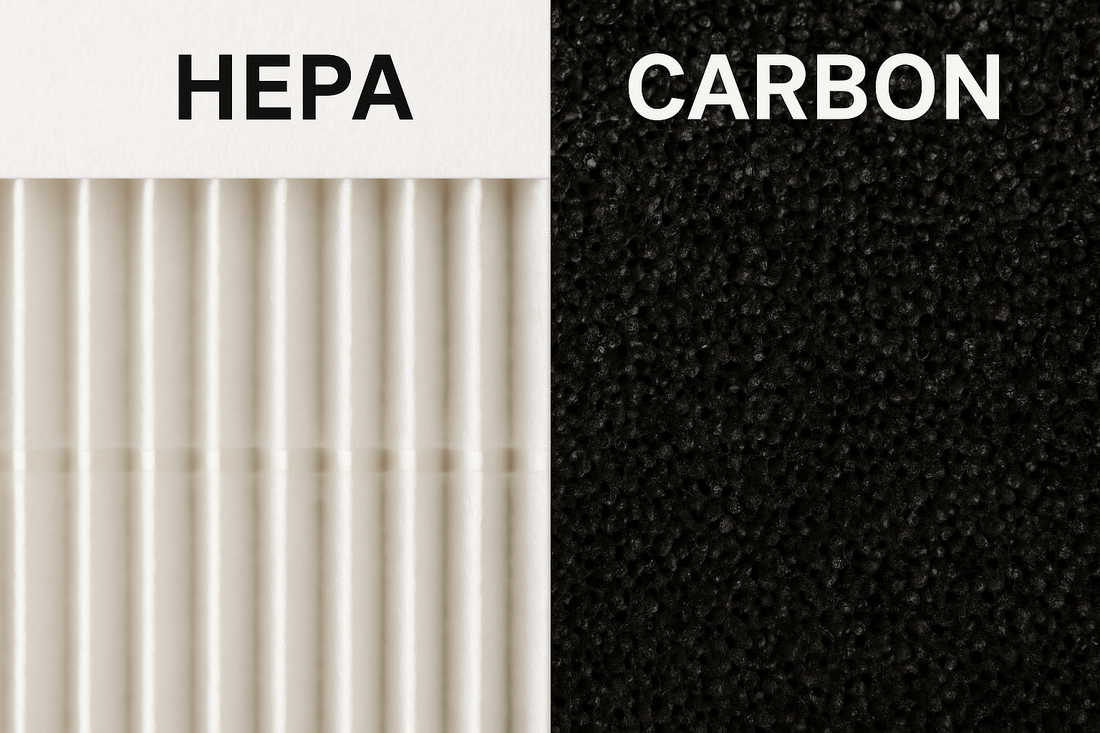
The Science Behind HEPA vs. Carbon Filters
Introduction
Air purifiers are essential tools for improving indoor air quality, but not all filters work the same way. Two of the most widely used technologies—HEPA filters and carbon filters—serve very different purposes. To make informed decisions, it helps to understand the science behind how these filters capture pollutants and what that means for your health and home.
How HEPA Filters Work
HEPA stands for High-Efficiency Particulate Air. These filters use dense fiber mats arranged in random patterns to trap microscopic particles.
• Diffusion: Very small particles, such as smoke or bacteria, collide with air molecules and become trapped.
• Interception: Medium-sized particles traveling with airflow are intercepted by filter fibers.
• Impaction: Larger particles like dust and pollen are unable to avoid fibers and stick to them.
This three-pronged mechanism enables HEPA filters to capture 99.97% of particles as small as 0.3 microns, making them invaluable for allergy and asthma relief.
How Carbon Filters Work
Carbon filters rely on adsorption, a process where gases and chemicals adhere to the surface of activated carbon. Activated carbon is extremely porous, with a huge surface area that allows it to trap volatile organic compounds (VOCs), odors, and harmful gases.
• Odor Removal: Smoke, cooking smells, and pet odors are effectively reduced.
• Chemical Capture: VOCs from paints, cleaners, and household products are absorbed.
• Air Comfort: By removing gases, carbon filters improve indoor comfort beyond particle filtration.
Key Scientific Differences
① Pollutant Type – HEPA targets solid particles (dust, pollen, allergens), while carbon filters capture gaseous pollutants (smoke, VOCs, odors).
② Filtration Method – HEPA uses physical fiber trapping, carbon relies on chemical adsorption.
③ Performance Lifespan – HEPA filters typically last 6–12 months; carbon filters may saturate faster (3–6 months).
④ Health Benefits – HEPA is best for respiratory relief, carbon is best for odor and chemical exposure reduction.
Why Many Purifiers Combine Both
Because HEPA and carbon address different pollutants, many advanced air purifiers integrate both filter types. This dual-stage system ensures that allergens and microscopic particles are captured, while odors and gases are also reduced. The science is clear: for the most complete air purification, both technologies working together provide superior results.
Conclusion
HEPA and carbon filters are built on different scientific principles, but both play crucial roles in cleaning indoor air. HEPA filters deliver unmatched particle capture, while carbon filters excel at odor and chemical removal. Together, they form a comprehensive solution for healthier, more breathable air.
👉 At AquaNest, we’ve curated specialized collections such as HEPA Replacement Filters and Carbon Replacement Filters to help you maintain the right balance of clean air in your home.
